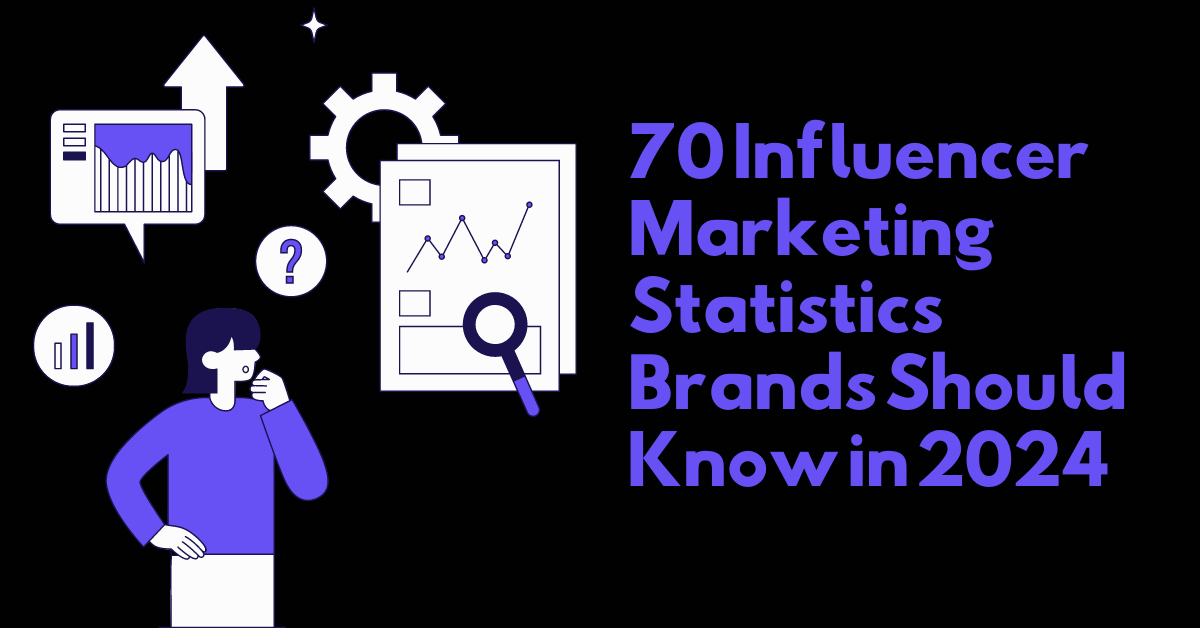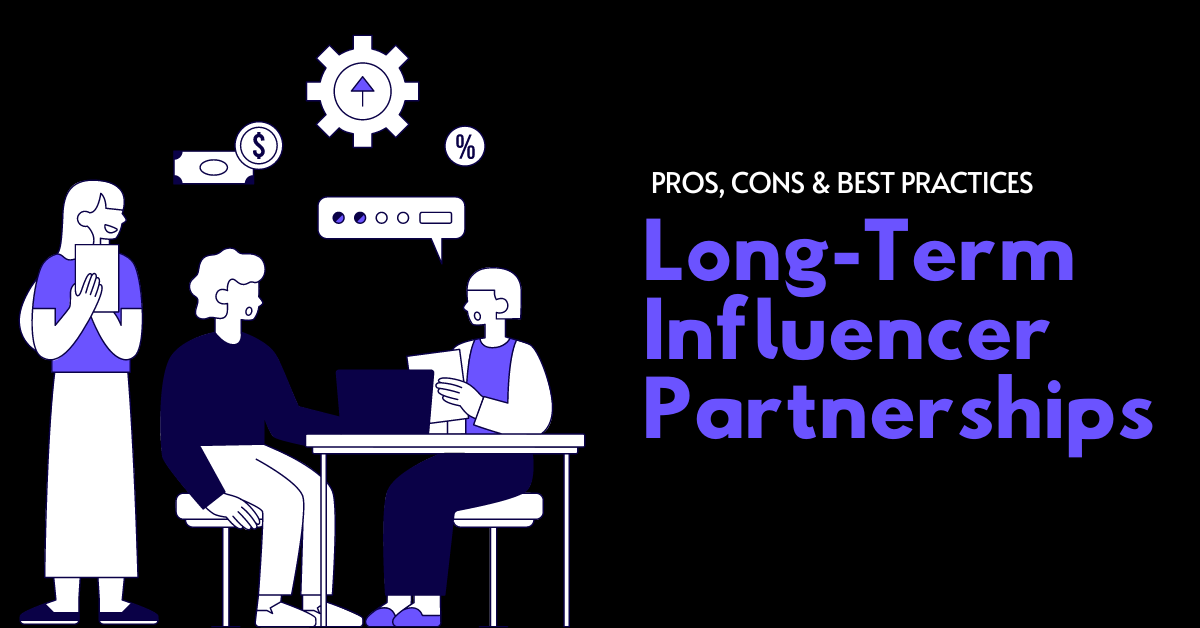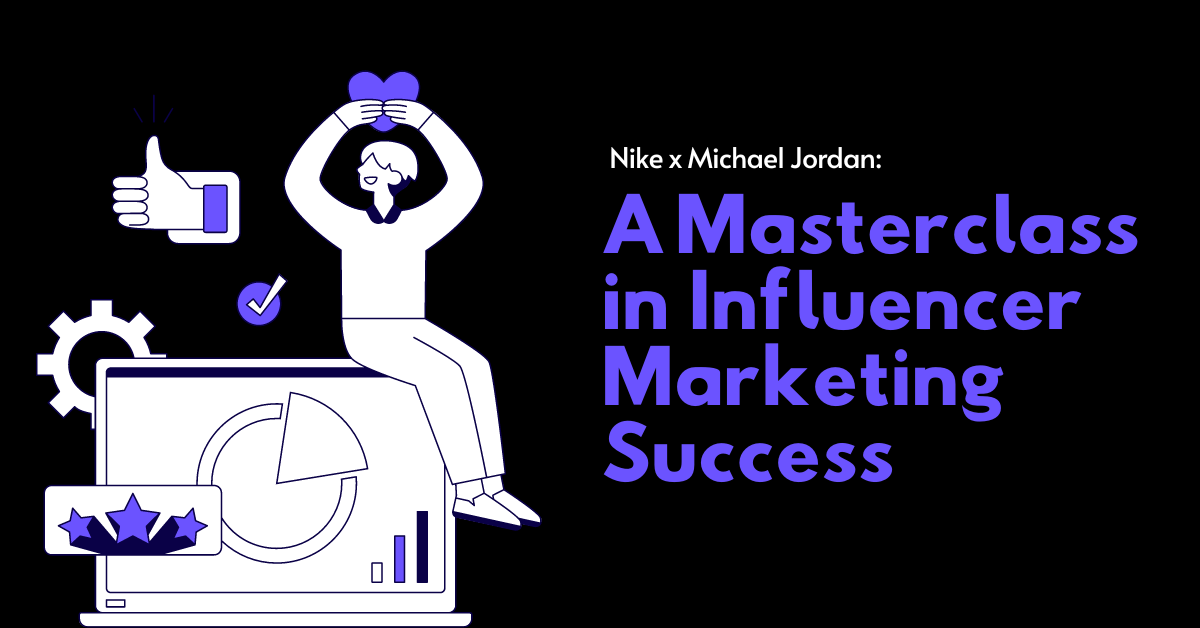As consumers increasingly seek authentic voices and genuine connections, brands have turned to influencers to tap into the power of word-of-mouth marketing in the digital age.
But Influencer Marketing is no longer just a buzzword; it is a multi-billion dollar industry that is reshaping the way brands engage with their audiences. In this comprehensive blog post about the latest Influencer Marketing statistics, we will explore the industry’s explosive growth, the effectiveness of influencer campaigns, budgeting trends, and the emerging technologies that are transforming the way brands collaborate with influencers.
Influencer Marketing Industry Statistics
1. The global Influencer Marketing market is expected to reach a record of $24 billion by the end of 2024, more than tripling since 2019.
2. In a survey by Meltwater, nearly 40% of marketers said they use Influencer Marketing or plan to do so in 2024, solidifying its position as a mainstream marketing channel.
3. Google search data reveals a remarkable 465% increase in searches for the term “Influencer Marketing” since 2016, highlighting the growing curiosity and demand for information regarding Influencer Marketing.
4. Projections indicate that by 2028, the influencer market will be valued at $109.37 billion, with a compound annual growth rate (CAGR) of 35.12% during the forecast period from 2022 to 2028.
Influencer Marketing Effectiveness Statistics
5. 92% of marketers believe that leveraging influencers is an effective form of marketing.
6. 78% of marketers have found Influencer Marketing to be an effective strategy for boosting brand awareness.
7. Influencer Marketing ROI is 11x higher than other forms of digital media.
8. On average, brands can earn $5.78 for each dollar they invest in Influencer Marketing.
9. Most marketers believe that Influencer Marketing attracts high-quality customers, with 83.8% saying that the customers gained from these campaigns are of better quality compared to other marketing methods.
10. According to 63% of marketers, content created by influencers performs better and drives higher engagement compared to brand-directed content.
Influencer Marketing Budget and Spending Statistics
11. More than 80% of marketers have a specific budget set aside for Influencer Marketing.
12. Nearly 60% of businesses with a budget for Influencer Marketing plan to increase this budget in 2024.
13. According to the State of Influencer Marketing 2024: Benchmark Report, 26% of respondents plan to allocate more than 40% of their marketing budget to Influencer Marketing.
14. More brands are now compensating influencers with monetary rewards rather than just offering free product samples. Specifically, 40.8% of brands provide monetary compensation, 30.8% give free product samples, 18.9% offer discounts on their products or services, and 9.4% enter their influencers in a giveaway.
15. Most brands spend less than $50,000 on Influencer Marketing, while nearly 15% invest over $500,000.
Influencer Marketing Trends Statistics
16. 63% of brands plan to use AI or machine learning (ML) to execute their influencer campaigns.
17. 55% of brands use AI to find influencers.
18. More than half (51%) of brands that work with influencers are e-commerce.
19. According to the 2024 HubSpot State of Marketing Report, short videos under 60 seconds are the top format marketers are using and are expected to see the most growth in 2024.
20. The average ROI for virtual influencer campaigns was 13.7% in 2023.
21. 21% of marketers repurpose influencer-generated content (IGC) on their websites and product pages.
22. Nearly 75% of marketers believe that Influencer Marketing can be automated. Most businesses using Influencer Marketing are happy to use tools and platforms or collaborate with agencies that employ automation.
23. The size of the social commerce market is anticipated to reach $1.7 trillion in 2024. 30% of B2C marketers predict that social selling will be the leading trend of the year.
24. 57.5% of marketers use third-party platforms to help with their Influencer Marketing, recognizing the benefits of leveraging technology for these efforts.
25. Popular uses of the Influencer Marketing Platforms include influencer discovery (47.9%) campaign automation and reporting (35.6%), influencer payments (34.5%), fraud and fake follower analysis (27.8%), paid amplification (24.2%), and conversion attribution (23.2%).
Influencer Statistics
26. There is a strong preference for working with smaller influencers, with 44% favoring nano-influencers and 26% favoring micro-influencers, compared to 17% for macro-influencers and 13% for celebrities. Brands prefer to work with smaller influencers to build trust through genuine interactions, unlike macro and mega influencers, whose endorsements can feel impersonal and sponsored.
27. 44% of businesses believe that the most significant advantage of collaborating with smaller influencers is that it is less expensive and facilitates building long-term relationships.
28. Micro influencers account for 47.3% of all influencers.
29. Micro-influencers with fewer than 100,000 followers generate up to 60% more engagement than those with larger followings.
30. On average, micro-influencers have a 6% engagement rate on Instagram, whereas mega-influencers typically have engagement rates of around 1.97%.
31. On TikTok, influencers with fewer than 15,000 followers have an impressive average engagement rate of 17.96%.
32. 44% of influencers express a preference for collaborating with brands to create content that resonates with their followers.
33. 93% of influencers are open to collaborating with a brand in exchange for free products, provided they genuinely love the brand or perceive high value in the product.
34. According to 70% of creators, long-term campaigns are their preferred method of partnering with brands.
Influencer Marketing and Consumer Behavior Statistics
35. 41% of consumers discover new products through influencers every week, with 24% doing so daily!
36. Social Media influencer posts rank as the top method for convincing people to try new products, with 35% of people stating that it has made them try something new.
37. 70% of consumers are bothered when a creator lacks transparency about a sponsored post.
38. Roughly 31% of Social Media users from the Gen Z, Millennial, and Gen X demographics show a preference for discovering new products through influencers on Social Media compared to other formats or channels.
39. 55% of Gen Z trust influencers more than traditional celebrities.
40. 56% of Millennials have been influenced to make purchases after viewing posts about products from people they follow online.
41. 63% of shoppers are more likely to purchase a product if a trusted Social Media influencer recommends it.
42. 42% of users prefer how-to tutorials from influencers.
43. Nearly half of consumers, 49%, rely on recommendations from influencers, and 69% trust the recommendations they receive from these influencers.
44. A report by Edelman reveals that 63% of consumers place more trust in influencers’ opinions about brands than in the information provided directly by the brands.
45. 61% of consumers find influencers with relatable personalities to be the most appealing.
Influencer Marketing Campaign Statistics
46. 32.9% of businesses prioritize views, reach, and impressions as the most crucial criterion when evaluating influencers, while 21.1% opt for the content type or category.
47. Approximately 61% of brands work with 10 or more influencers, while only 39% partner with less than 10 influencers.
48. Almost half, 49%, of influencers express a preference for long-term campaigns as their favorite way to work with brands.
49. 49% of brands prefer to run influencer campaigns on a monthly basis, while 15% run quarterly campaigns, and only 14.4% prefer annual campaigns
50. 62.9% of Influencer Marketing relationships are campaign-based. Conversely, only 37.1% are “always on” partnerships.
51. The primary factor when partnering with influencers for businesses is content production, cited by 37.1% of the survey respondents. Audience relationships are considered crucial by 22.9% of respondents. Distribution is the third most popular reason, favored by 18.1% of participants, and 7.5% of respondents prioritize attribution and tracking.
52. 56% of companies work with the same influencer multiple times.
53. 56% of marketers use influencer campaigns primarily for creating user-generated content, 23% for generating sales, and 21% for raising awareness.
54. Close to 80% of brands monitor sales from influencer campaigns.
55. 85% of marketers gauge an influencer’s success based on their engagement rate.
56. 70% of marketers measure the return on investment (ROI) from their influencer campaigns.
57. 54.3% of businesses indicated that they measure the success of an Influencer Marketing campaign based on views, reach, or impressions, while 23.5% rely on engagement or clicks, and only 22.1% focus on conversions or sales.
Influencer Marketing on Social Media Platforms Statistics
58. In April 2024, there are approximately 5.07 billion Social Media users, constituting 62.6% of the world’s total population.
59. As Social Media becomes the new search engine, 51% of Gen Z prefer using it over Google to search for brands.
60. In 2024, 90% of brands plan to increase their presence on Instagram.
61. 89% of creators plan to prioritize TikTok over Instagram in 2024.
62. TikTok, used by 69% of brands using Influencer Marketing, is the most favored channel, surpassing Instagram (47%), YouTube (33%), and Facebook (28%).
63. 50.1% of marketers believe that TikTok offers the highest return on investment (ROI) for Influencer Marketing, surpassing Instagram Reels at 29.9%. A smaller percentage, 12%, favor YouTube Shorts, while 8% opt for Snapchat Spotlights.
64. According to The Influencer Marketing Benchmark Report 2024, engagement rates for influencer campaigns are highest on TikTok, ranging between 10% to 15%, followed by Instagram, which typically sees rates between 1% to 4%.
65. LinkedIn is experiencing record levels of engagement and user activity. B2B marketers are prioritizing B2B influencers on the platform, with 98% emphasizing the relevance of the influencer’s audience, 87% valuing the audience’s perception of trustworthiness, and 78% considering subject matter expertise important.
66. On Facebook, the most common types of posts are link posts, accounting for 49.2% of content, followed by photo posts at 30.8%, video posts at 17.7%, and status posts at 2.3%. For Instagram business accounts, photo posts are the most popular, making up 41.7% of the content, followed by video posts at 38.2% and carousel posts at 20.0%. The rise of platforms like YouTube has increased the demand for video content, while the success of TikTok and its competitors has prompted a noticeable shift towards short video content.
Influencer Marketing Challenges Statistics
67. In 2024, there is an increased concern among firms about influencer fraud, with 71.7% expressing worries, up from 64% in the previous period.
68. The number of firms reporting that they have experienced influencer fraud, such as fake followers, has increased to 59.8% this year. This marks a notable rise from 31% in 2022 and 55% in 2023.
69. For over 60% of marketers, monitoring ROI stands as the most significant challenge in Influencer Marketing. Additionally, selecting the right quality influencers concerns 55.86% of marketers, while 52.25% are troubled by content quality and 49.55% express concerns about brand safety.
70. 28% of Social Media experts find it challenging to keep up with Influencer Marketing trends.
Looking at these industry statistics and trends, it is clear that the Influencer Marketing industry is prepared for continued growth and evolution. With the integration of AI and machine learning technologies, the rise of short-form video content, and the increasing focus on authentic collaborations with nano and micro-influencers, brands have a unique opportunity to tap into the power of Influencer Marketing like never before. However, challenges such as influencer fraud, finding the right influencers, and measuring ROI persist, underscoring the importance of implementing robust fraud detection measures, leveraging advanced analytics, and partnering with reputable Influencer Marketing Platforms like Creable.
Brands need to stay informed, adaptable, and committed to building genuine relationships because, in the world of Influencer Marketing, that is the key to success.



